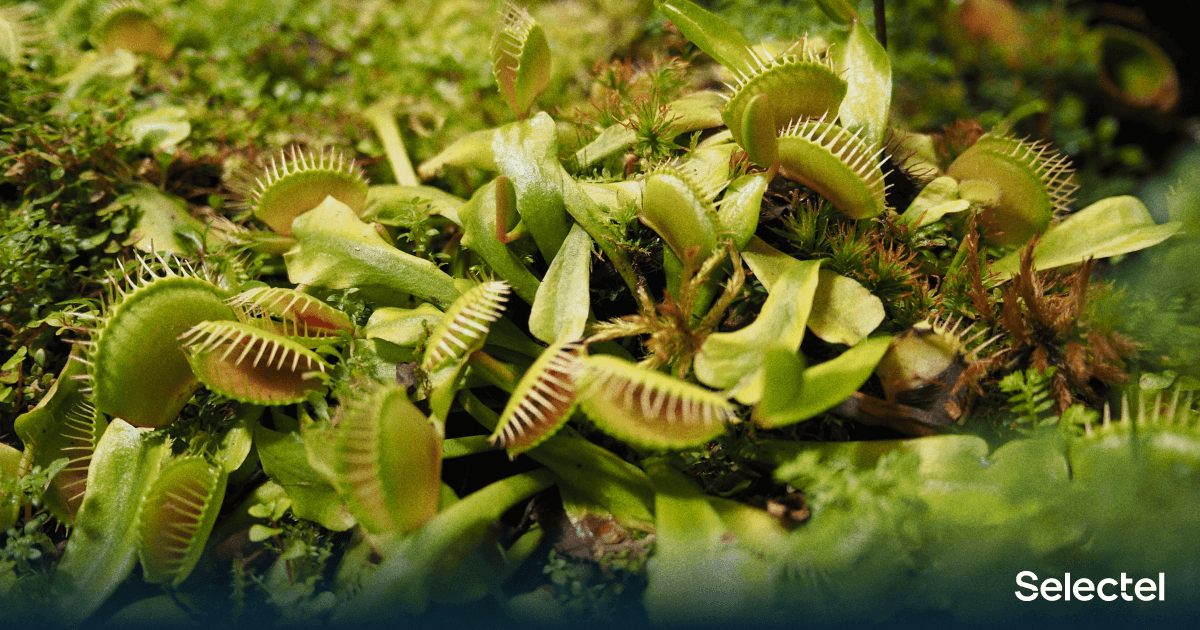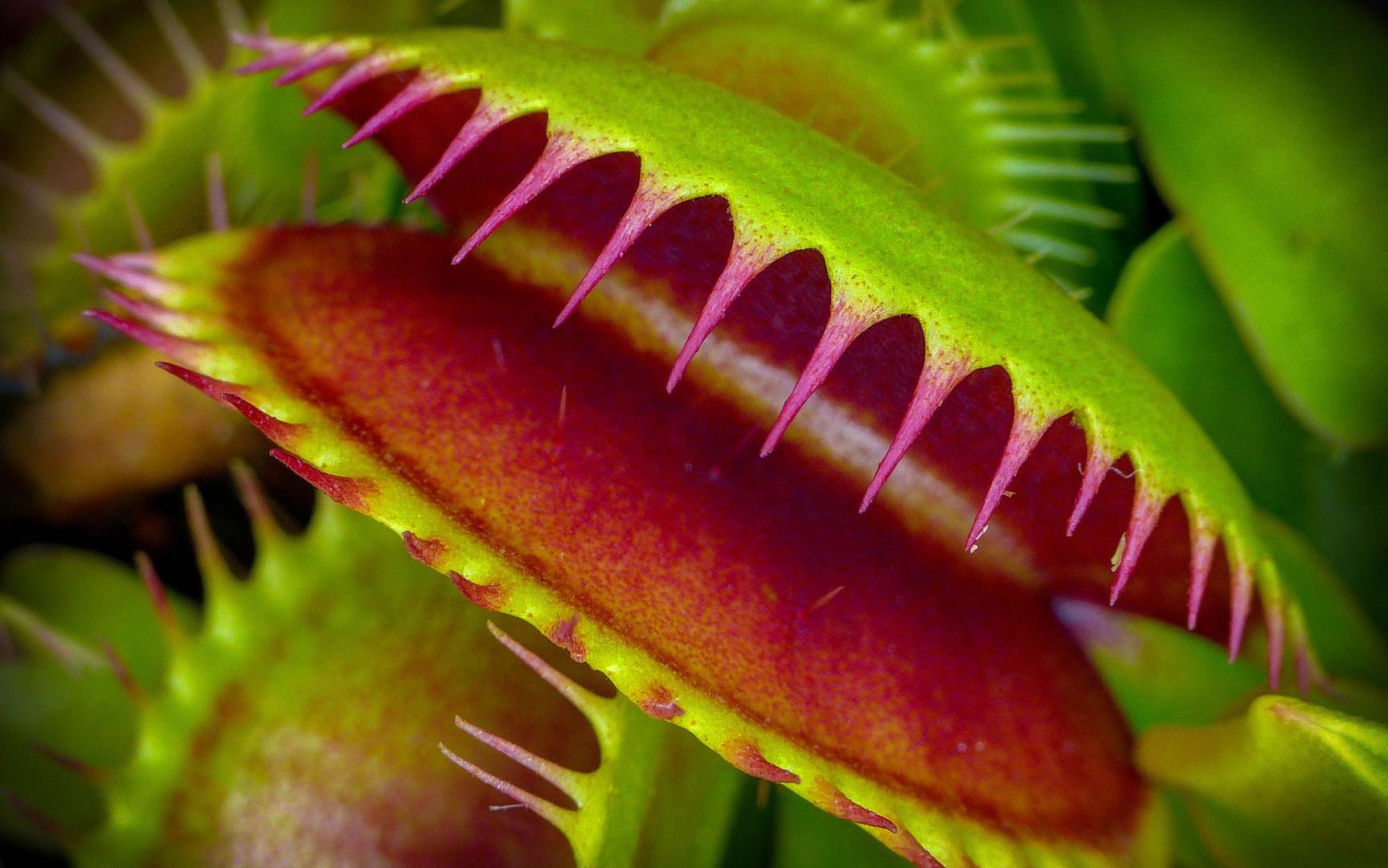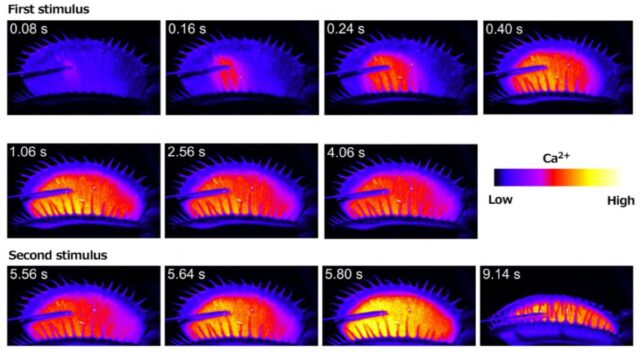
The Venus flytrap is an extremely interesting plant. It captures its victims (small insects, arachnids, etc.) with the help of modified leaves. There are special hairs on their surface that react if something hits the surface of the leaf. The edges of the leaves quickly wrap up and the victim is trapped, which gradually turns the small creature into food for the plant.
The flycatcher needs animal food to replenish nitrogen reserves - it usually appears in regions with marshlands, the soil of which is poor in nitrogen. But how can a plant, which does not have muscles and a nervous system, not only capture something, but also “remember” that there is a victim inside the leaf, and it is not worth unrolling it?
How the capture mechanism works
A few months ago, the results of a study of the mechanism of capture of victims by plants were published by biologists from the University of Würzburg. As it turned out, the plant “knows how to count”. The fact is that most often the sheet on which something appeared is triggered only after the second touch. The fact is that the Venus flytrap spends a lot of resources on high-speed bending of the leaf, therefore, it is impermissible to spend energy on responding to wind, dust, pebbles, etc., concerning sensitive hairs.
The Venus flytrap waits for the second touch, but only then squeezes the leaf. The mechanism works most effectively when the insect touches the hairs located at the edges of the leaf, and then appears in the center. According to scientists, hairs have a cumulative effect.
Sensory hairs are capable of perceiving a force of even 0.05 millinewtons. The response time of the trap depends on the force of the touch and the direction of the force application.
In a toga, the flycatcher is able to catch not only slow insects and arthropods - beetles, caterpillars, wood lice, but also fast, capable of flying away - flies and mosquitoes. Moreover, the hungrier the plant, the faster the mechanism of leaf squeezing reacts.
And that is not all
The trap leaf does not close completely immediately and does not start producing digestive enzymes. To start this process, five incentives are needed. German scientists believe that this behavior can be compared with a rudimentary analysis of costs and possible outcomes. The more incentives, the more likely there is more production, which is definitely worth the effort. If the “analysis” shows that the victim is not worth the energy and enzymes expended on it, then the insect or pebble is thrown out by the leaf after 12 hours.
Everything would be fine, but the question arises - how exactly can a flycatcher be able to count? It would be okay if the sheet collapsed after just 1 touch. But he does it after at least 2 touches, and the production of the enzyme and the final compression begins after 5 touches. And this is the ability to "count" and "analyze". German scientists decided to find out how this mechanism works.

To do this, they introduced a fluorescent calcium sensor into the plant. As it turned out, it is the change in calcium concentration that somehow affects the "memory" of the plant. Previously, scientists have not been able to figure out how exactly the concentration of calcium in the tissue correlates with the "score", but now everything worked out.
The Germans were helped by Japanese scientists who developed a specialized preparation GCaMP6. It is a luminescent organic substance that glows green when it binds to calcium. It was this green fluorescence that enabled the team to track changes in calcium concentration in response to stimulation of the plant's sensitive hairs with a needle.
Before using the fluorescent substance, scientists tried to find out the mechanism of the plant's "memory" using other methods, spending 2.5 years on this. But only now we managed to find out everything.
So what's with calcium?
The first touch to the sensitive hairs of the flycatcher starts the mechanism of the release of calcium ions to a certain level. If within 30 seconds there is another touch, the concentration of calcium reaches a critical level, after which the trap will work. If nothing happens after half a minute, the calcium concentration will begin to decrease. We can say that the flycatcher "remembers" events for 30 seconds.

Now scientists plan to bring their research to its logical conclusion and study the relationship between calcium concentration and the "nervous system" of the flycatcher. It converts the movement of the prey into electrical signals that propagate through the cells.
As a result, the researchers plan to study the evolutionary process of predatory plants, as well as learn more about the mechanisms that underlie hunting. Until now, many biological features of plants and animals remain a mystery, and the task of scientists is to unravel it. By the way, all plants with trap leaves have one common ancestor - a plant that did not hunt for animal food. But in its genome there were some regions that were used to find and assimilate nutrients not only by roots, but also by leaves, so these regions later evolved into something else. A similar mechanism has developed in predatory plants that grow water lily traps without elements actively responding to prey.
DOI: Nature Plants, 2020.10.1038 / s41477-020-00773-1 .
